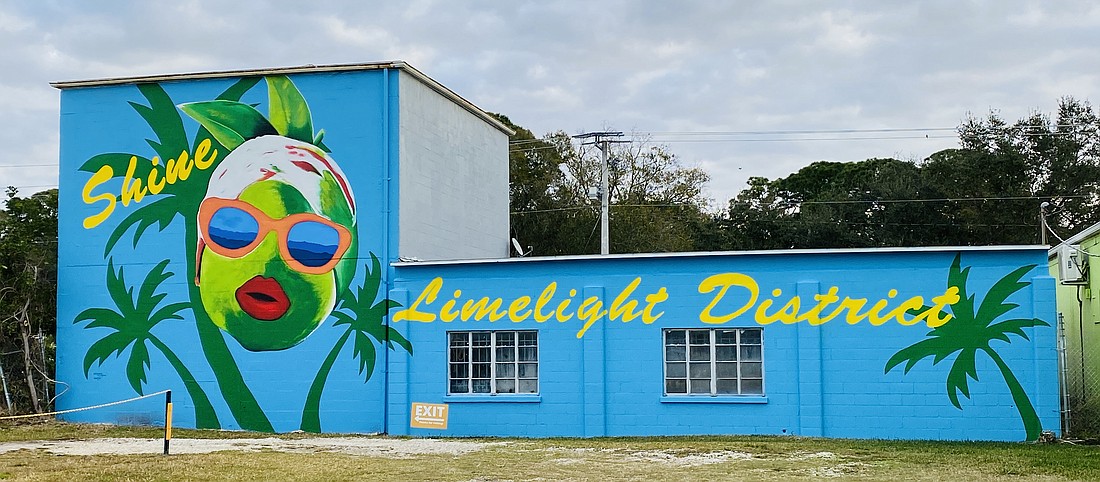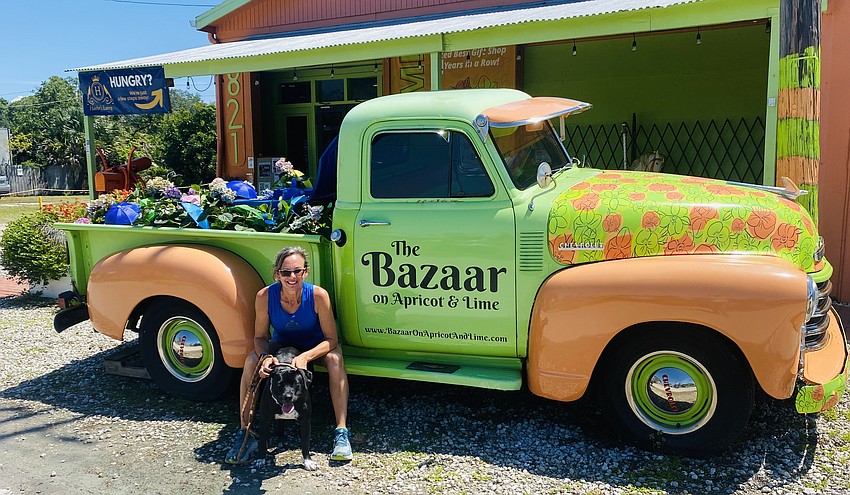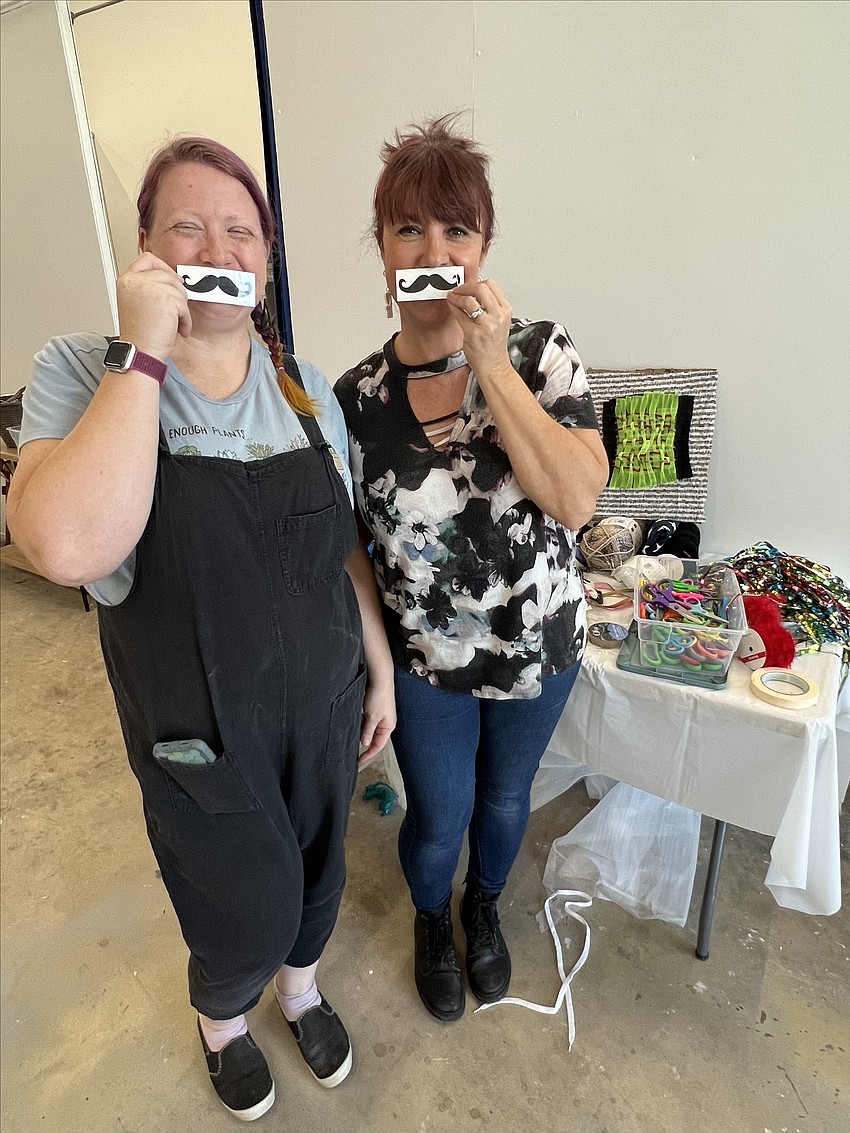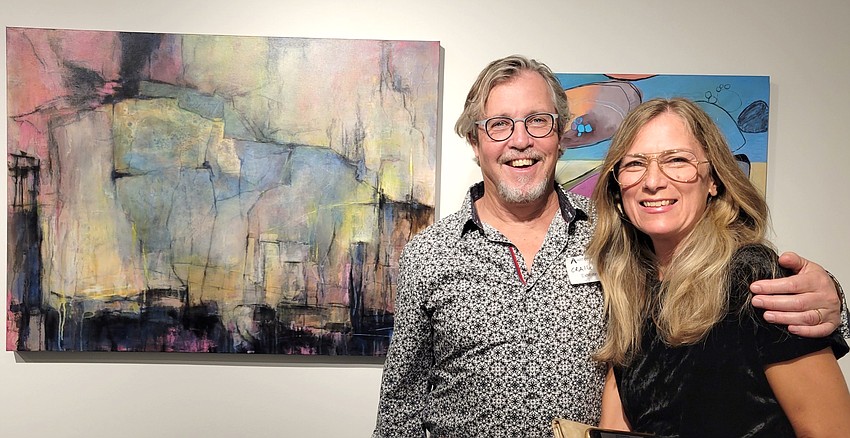- March 12, 2025
-
-
Loading

Not far from where cranes loom over ascending towers of multimillion-dollar condos downtown, a scrappier, grass-roots development is taking shape. A pedestrian-friendly arts destination is gaining momentum in the Limelight District long Lime Avenue between Fruitville Road and 12th Street.
Right now, the district's fourth boundary juts in and out along Waterloo Avenue to accommodate residential buildings. But this border is in flux as the Limelight District, officially recognized by the city in 2020, works to extend its western boundary to encompass galleries around Princeton Street.
The Limelight District recently raised its profile with the March 30 opening of the Palmer Modern at 925 N. Lime Ave. The arrival of the new gallery with artist spaces follows the February addition of a second space by arts collective Creative Liberties at 927 N. Lime Ave. Its flagship is nearby, at 901B Apricot Ave.
Twenty-one artists call Creative Liberties home, including co-founders Barbara Gerdeman, who specializes in photography, acrylic painting and mixed media, and Elizabeth Goodwill, who creates book art, fiber art and mixed media. Their new building houses 10 studio artists, gallery space and the Creative Academy classroom.
“Thanks to a huge amount of support from the community—the public, artists, arts advocates and the media—we have been able to grow Creative Liberties in a short time period,” says Gerdeman.
Commercial businesses are taking notice of the artistic ripening of an area formerly known for auto repair shops. Recent months have seen the arrival of Sunflower Market on Lime Avenue, a WaWa convenience store on Lime Circle and Sun King Brewing on Mango Avenue.
The arrival of Sun King has prompted Kim Livengood to add Friday night hours for her dog-friendly Hamlet's Eatery. The food truck-cum-brewpub is located at Livengood's The Bazaar at Lime and Apricot along with roughly 40 other tenants. Opened in 2018, the Bazaar is considered the catalyst for the area's evolution.

But wait. This story is about art, not business. Actually, it's about the intersection of art and commerce, and what urban planners call "placemaking," community development that's easier said than done.
In the case of the Limelight District, a braintrust of sorts has come together. Its members include Livengood, real estate developer and arts patron Howard Davis, Creative Liberties proprietors Gerdeman and Goodwill, Palmer Modern owner and artist Craig Palmer and his wife, Jen Palmer, president of the Sarasota Studio Artists Association.
There are others in the mix as well. You can be sure that those with a stake in the future of the Limelight District will make their voices heard. Anyone with land or a business in the area can join the Limelight District's association for a newly instituted membership fee of $100.
Davis has been approached by investors who want to be part of 925 Lime Ave. and other properties that Davis and his wife, Sherry, may acquire in the Limelight District in the future. But they prefer to go it alone, turning down investors and even shunning bank financing with one exception, Howard Davis says.
"When you're investing your own money, it keeps you very focused," he says. "And there is no such thing as a silent partner."
A high-profile real estate developer who spent most of his career in Boston, Davis cut his teeth in Sarasota with the transformation of an abandoned furniture store he bought in 2016 in what is now called the Rosemary District. In 2021, he sold the lovingly refurbished Mid-Century Modern building, The BOTA (for Boulevard of the Arts) Center, at 1570 Boulevard of the Arts, for $4.35 million.

In some instances, the impetus behind placemaking comes from local government. But the Limelight District's birth can be attributed to Judy Alexander, Kim Livengood's mother.
Alexander spent most of her life as an indefatigable community volunteer. But to hear her daughter tell it, Judy Alexander's dream was to own a warehouse. "One day my parents were driving down Lime Avenue. My mom saw the building and said to my dad, 'Let's buy it.' My dad never said no to my mom."
Livengood's father, Barry Alexander died in 2019, but lived to see that warehouse become a vibrant venue for artists and craftsmen to sell their wares. Fronted by an old school pickup painted lime and apricot and decorated with a mural painted by artist Karen Chandler on a neighbor's building, the arts-and-crafts mall is hard to miss.
Thanks to the efforts of tenants as well as tourist development and artists groups, the Limelight District is becoming a destination for locals and tourists alike, particularly on the Second Saturdays organized by the Sarasota Studio Artists Association, which has more than 50 members.
Spearheaded by Jen Palmer, the group has created a map of art galleries not just in and around the Limelight District but all over the city.
Right now, the Limelight District has the lure of plentiful, free parking. Who could ask for more?
Actually, there are some things that Livengood & Co. have on their wish list.
Every arts neighborhood needs colorful banners hanging from city streetlights and Livengood wants some. "But you wouldn't believe what it costs —$100 each and liability insurance in case one of them falls down and hurts someone," she says.
The banners, when they are hung, will carry a new Limelight District logo, which is in the works along with an upgrade of the website. Fortunately, there is no shortage of branding, design and marketing expertise among members of the Limelight District's braintrust.

Livengood and both Palmers have marketing experience while Creative Liberties co-owners Gerdeman and Goodwill worked alongside each other at the Art Center Sarasota.
As the Limelight District grows up, its backers want knotty zoning issues to be hashed out by the city council. Current code permits heavy industrial businesses that might not fit in with the arts district, some of them auto-related.
However, some gallery and shop owners like the idea of auto repair shops in the area because people getting their cars fixed must leave them for a few hours, creating the opportunity to explore the budding artsy neighborhood.
Also on the zoning front, Davis and Palmer see the need to accommodate work/live spaces for artists. Davis is offering entrepreneurial artists such as Palmer, Gerdeman and Goodwill the opportunity to lease space at below market value. They in turn are subdividing the space and renting it out to artists and craftsmen.
Davis and others envision a future for the Limelight District where artists burning the midnight oil can sleep on a a pull-out sofa without running into trouble with the law.
Well acquainted with working with local governments from his career in real estate, Davis says the Limelight District is also asking the city for help on issues such as sidewalk improvements, better streetlights and sewage system upgrades.
Some Sarasotans, especially second-homers and new transplants, may not realize that there are still some houses near downtown using septic tanks. Such outmoded waste disposal has the potential to foul the air and streets, not a good look for the Limelight District.
Unlike other arts destinations across the country that sprung up in warehouse districts, the Limelight District is not plagued by crime. Maybe the auto repair shops in the neighborhood do a good job of outfitting cars with anti-theft devices. But for whatever reason, safety isn't a concern right now, Davis says.

When you ask members of the Limelight coterie about their vision for the district, the answers overlap and involve common goals. Inclusion ranks high on the list for Jen Palmer as well as the Creative Liberties co-founders Gerdeman and Goodwill— "art for all, not just rich people," says Palmer.
Craig Palmer says the Limelight District's artist studios can help creators build relationships with potential buyers, a factor that he sees as increasingly important in a high-tech, post-COVID world.
“Some of the most interesting conversations are when visitors observe my work and explain to me what they see," Palmer says. "It made me aware that everyone has their own unique interpretation and experience of abstract art, and I like to believe that it helps inspire creativity for the viewer.”
Palmer Modern features an art gallery and includes a studio for Craig Palmer as well as affordable studios for five additional artists. The artists have access to a kitchen, lounge area, space to publicly display their work, and private, secure studios.
For Davis's part, the placemaking happening along Lime Avenue is about the "three C's — creativity, community and collaboration."
Perhaps pioneer Kim Livengood sums up the goal the best: "We're looking to create a neighborhood where you can park your car, walk around, watch art being made, buy some stuff and get something to eat or drink," she says. Oh, and don't forget your dog.